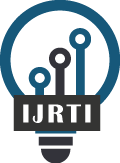|
International Journal for Research Trends and Innovation
International Peer Reviewed & Refereed Journals, Open Access Journal
ISSN Approved Journal No: 2456-3315 | Impact factor: 8.14 | ESTD Year: 2016
Scholarly open access journals, Peer-reviewed, and Refereed Journals, Impact factor 8.14 (Calculate by google scholar and Semantic Scholar | AI-Powered Research Tool) , Multidisciplinary, Monthly, Indexing in all major database & Metadata, Citation Generator, Digital Object Identifier(DOI)
|
Issue: December 2025
Volume 10 | Issue 12
Review Result and Publication of Paper within : 2-3 days
Click Here For more DetailsFor Authors
Forms / Download
Published Issue Details
Editorial Board
Other IMP Links
Facts & Figure
Impact Factor : 8.14
Issue per Year : 12
Volume Published : 10
Issue Published : 115
Article Submitted : 19444
Article Published : 8041
Total Authors : 21252
Total Reviewer : 769
Total Countries : 144
Indexing Partner
Licence
This work is licensed under a Creative Commons Attribution-NonCommercial 4.0 International License







|
Published Paper Details
|
|
| Paper Title: | Risk stratification models powered by artificial intelligence for early-stage breast cancer detection |
| Authors Name: | Joseph Kobi , Millicent Naa Oye Boadu , Dorothy Honny Bendah , Bernard Afoakwah , Brian Otieno Odhiambo |
| Download E-Certificate: | Download |
| Author Reg. ID: |
IJRTI_200933
|
| Published Paper Id: | IJRTI2502093 |
| Published In: | Volume 10 Issue 2, February-2025 |
| DOI: | |
| Abstract: | Breast cancer has become the most frequent cancer in women in America and is expected that for 2024 there were about 310,720 new invasive breast cancer cases. The utilization of AI in breast cancer management for either identification of the diseases or staging of the disease will be a revolutionizing breakthrough in the care of Cancer patients. Deep learning models being developed in recent years have shown a high ability in identifying patterns and diagnosis of medical data to predict diseases possibly bringing revolutionary changes in early diagnosis techniques. Materials and Methods: An extensive review was made on different electronic databases to compare the AI-based risk stratification for the identification of breast cancer. The studies comprised a protocol that involved systematic reviews of machine learning algorithms and deep learning architectures in case of breast cancer risk assessment. Published literature and other empirical papers consisting of concept theories, quantitative and qualitative research, primary or peer-reviewed, systematic reviews and meta-analyses, and especially those from America were explored. Findings: Based on the results, the recurrent neural networks were observed to produce the highest level of accuracy of 98.58% in the assessment of breast cancer risk followed by the genetic programming and transfer learning and with an accuracy level greater than 96%. In predicting mortality the multiple data stream models especially, the imaging features with clinical parameters presented high performance than traditional risk predictors. Especially, it was identified that the deep learning structures had a high efficiency in analysing imaging data where the convolutional neural networks were demonstrating high accuracy in mammographic analysis. Discussion: The result supports the prospect that breast cancer risk stratification model based on AI can help to maximize the benefits of the disorder detection. The enhanced performance of deeper architectures in handling of imaging data provides credence to the developing new paradigm for the detection strategies. There are still some limitations to interpretability of the model, standardization of implementing protocols, and incorporating it into clinical environments. In addition, the study underscores the need for sound validation approaches as well as generalization across different patients. These findings underscore the importance of interdisciplinary whether in the form of joint research between healthcare practitioners, data scientist and technologist to redesign these systems for health care use. Conclusion: Risk stratification models by artificial intelligence hold a great potential in changing the scenario of early breast cancer detection. The application of these technologies in clinical practice pushes for the likelihood of precise, timely and individualized screening techniques. Although there are problems with regard to implementation and setting of standards, there is clear evidence that these systems should be maintained and improved. According to the suggestions based on data and analysis, AI proven risk assessment is a major breakthrough toward combating breast cancer, and could enhance the treatment of the diseases, its early discovery, and some targeted solutions. |
| Keywords: | Artificial Intelligence, Breast Cancer Detection, Machine Learning, Deep Learning, Neural Networks, Precision Medicine, Healthcare Innovation, Predictive Analytics, Digital Health, Cancer Screening. |
| Cite Article: | "Risk stratification models powered by artificial intelligence for early-stage breast cancer detection", International Journal of Science & Engineering Development Research (www.ijrti.org), ISSN:2455-2631, Vol.10, Issue 2, page no.a888-a913, February-2025, Available :http://www.ijrti.org/papers/IJRTI2502093.pdf |
| Downloads: | 000421 |
| ISSN: |
2456-3315 | IMPACT FACTOR: 8.14 Calculated By Google Scholar| ESTD YEAR: 2016 An International Scholarly Open Access Journal, Peer-Reviewed, Refereed Journal Impact Factor 8.14 Calculate by Google Scholar and Semantic Scholar | AI-Powered Research Tool, Multidisciplinary, Monthly, Multilanguage Journal Indexing in All Major Database & Metadata, Citation Generator |
| Publication Details: |
Published Paper ID: IJRTI2502093
Registration ID:200933
Published In: Volume 10 Issue 2, February-2025
DOI (Digital Object Identifier):
Page No: a888-a913 Country: Worcester, MA, United States Research Area: Health Science Publisher : IJ Publication Published Paper URL : https://www.ijrti.org/viewpaperforall?paper=IJRTI2502093 Published Paper PDF: https://www.ijrti.org/papers/IJRTI2502093 |
| Share Article: | |
|
Click Here to Download This Article |
|
| Article Preview | |
|
|
|
Major Indexing from www.ijrti.org
| Google Scholar | ResearcherID Thomson Reuters | Mendeley : reference manager | Academia.edu |
| arXiv.org : cornell university library | Research Gate | CiteSeerX | DOAJ : Directory of Open Access Journals |
| DRJI | Index Copernicus International | Scribd | DocStoc |
ISSN Details
 |
 |
ISSN: 2456-3315
Impact Factor: 8.14 and ISSN APPROVED,
Journal Starting Year (ESTD) : 2016
DOI (A digital object identifier)
 Providing A digital object identifier by DOI.ONE How to Get DOI? |
Conference
Open Access License Policy
Important Details
Join RMS/Earn 300
WhatsApp
Click Here
Click Here
Indexing Partner |
|||
| Copyright © 2025 - All Rights Reserved - IJRTI | |||






